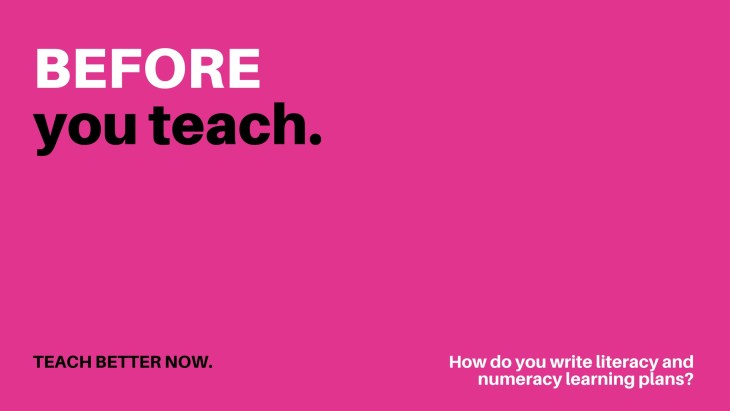
Good work… One final short module and we will have covered everything that you need for Collection 5.
The last thing here is how to write learning plans that focus on literacy and numeracy. Specifically, we want you to use the data that you’re getting from your diagnostic assessments and use it in a constructive way.
Here’s what you need to do next:
- Write up learning plans showing learner goals, strengths, and needs.
- Discuss these with your learners as appropriate
You may already have learning plans in place for your learners that focus on the unit standards that they need to achieve or other milestones in your programme.
What we’re after now relates to the next steps for your learners in terms of their literacy and numeracy development.
Why do I have to make learning plans for my learners?
We think that it’s important to do something sensible with the rich information that you’re now getting from the diagnostic questions that you ask. One simple action here is to create literacy and numeracy-focused learning plans for your learners.
You may already have learning plans in place for your learners. If that’s the case, you might want to just add the relevant literacy and numeracy step that your learners need to focus on.
Using learning plans are good practice for any kind of teaching. Here are some guidelines for developing learning plans. You should
Do it together
Develop and negotiate them together with your learners if you can. Not all learners will have the capacity to think about their learning. But it’s a goal you should be working towards.
Set specific goals
These goals need to be SMART. This means that the goals need to be:
- Specific
- Measurable
- Achievable
- Realistic; and have a sensible
- Timeframe
Be explicit
We need you to be explicit about which particular progression (or progressions) you are focusing on. For example, “We’re targeting the vocabulary and reading comprehension progressions”.
Begin with the end in mind
Your learner needs to know when they’ve achieved the goal. If it’s too broad they’ll never achieve it. Likewise, if they can’t see a clear end or some way of knowing that they’ve achieved the goal they will lose motivation.
Describe the strategies you’ll use
You need strategies in place if you want to see real gains. You’ve had plenty of time to think about how you’re going to work on this. Say what the strategies are that you intend to use.
Set a clear time frame
This is part of SMART goal setting. Your goals should be specific enough that they are achievable within a relatively short timeframe. For example, three months or less.
The more pushed for time you are, the narrower, and more specific you should be about everything.
Identify changes needed
The specific gains that you want are not going to happen in the timeframe you’ve set without effort. Learning can be fun, but it does require effort from your learner. Identify the changes that your learner will need to make if they want to achieve the goal.
If you think back to the idea that our definitions for literacy and numeracy include observable behaviours then you can highlight some of the behaviours that you expect to see.